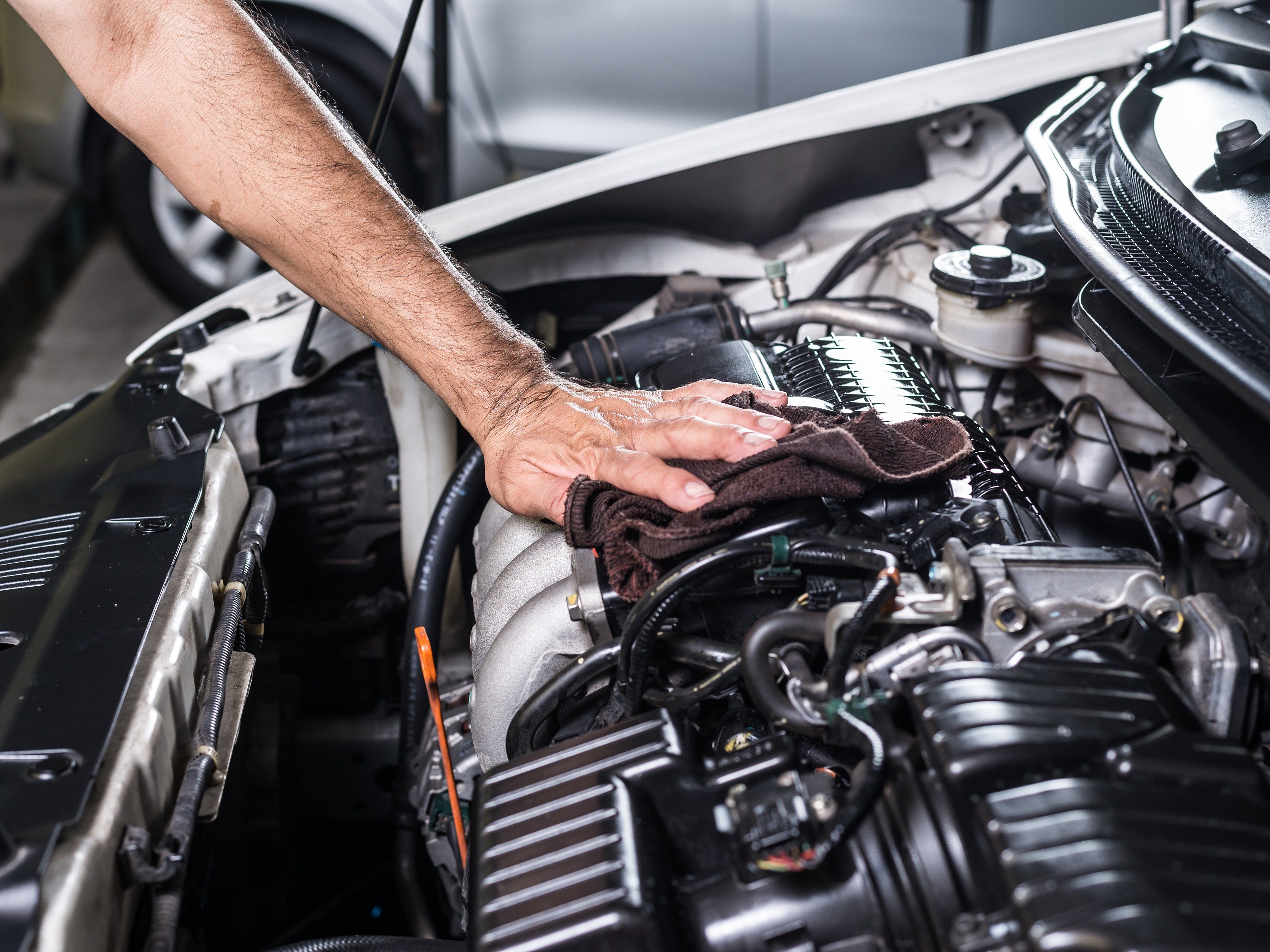
How to Clean a Greasy Car Engine
If you’re a clean freak, you’ve probably been degreasing your engine for years. But if you don’t know how to clean an engine, here are two good reasons why you should. First, a clean engine is easier to work on. Second, a clean engine brings more at resale. But you can’t just spray it with degreaser and hose it down. We’ll show you how to prepare the engine to protect critical electrical connections. We’ll also give you some tips for doing the job in an environmentally safe way.
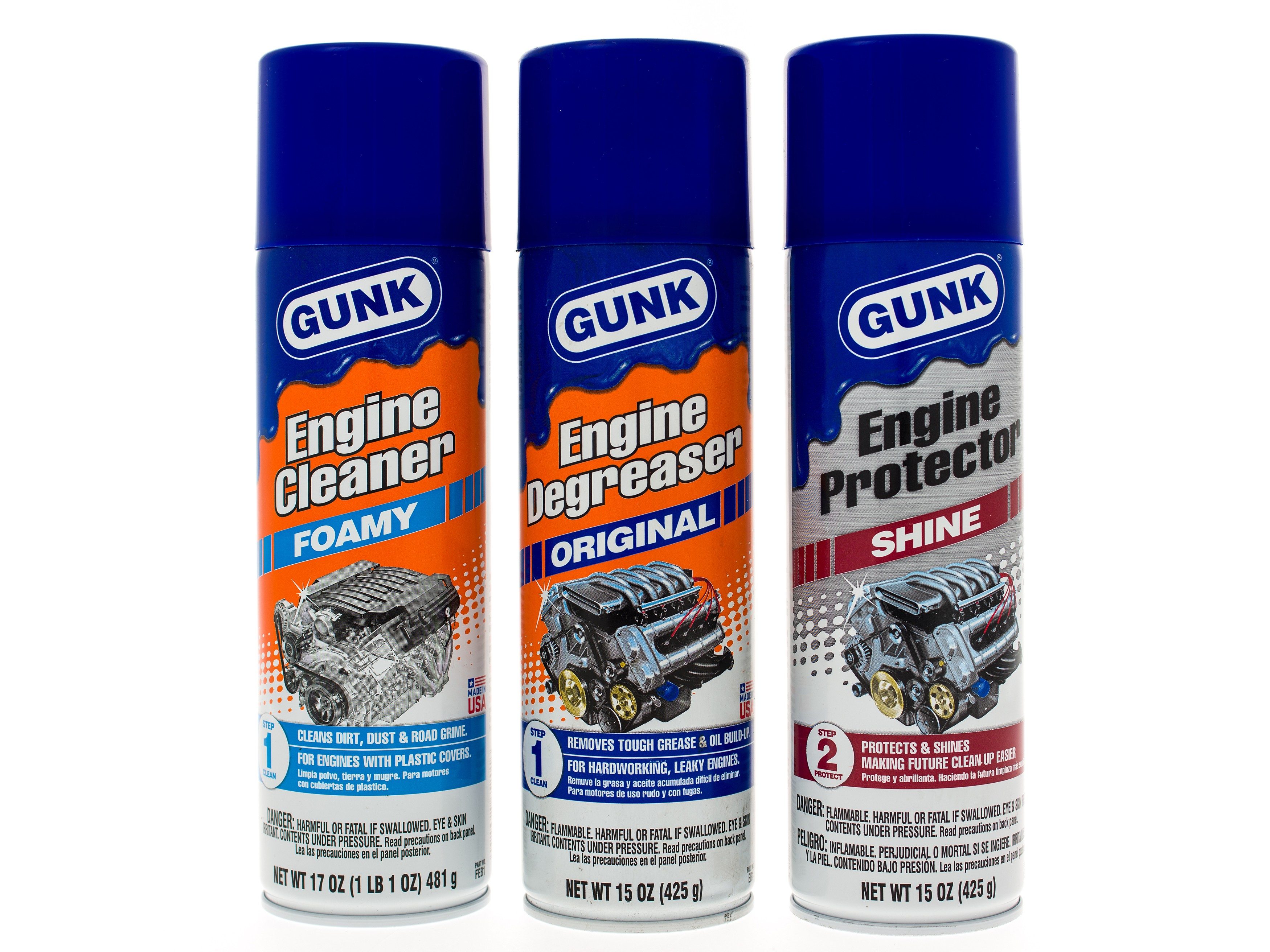
Picking an Engine Degreasing Product
Degreasing products come in two types: solvent and water-based. Both types work on greasy engines. And both require special environmental handling once they’re applied-even if the label says “environmentally safe” or “biodegradable.” Because once the degreasing solution starts dissolving the grease, it’s considered hazardous waste.
We prefer solvent-based degreasers because they work faster and seem to cut through heavy grease buildup better than most water-based products. The downside is their strong solvent smell. If you’re sensitive to solvents, choose a concentrated water-based product instead.
To get better “cling” on vertical surfaces, choose either a foam or a gel formula (such as GUNK Heavy Duty Gel Degreaser; available at auto parts stores).
While you’re at the auto parts store, pick up a drip pan and three 3-packs of absorbent mat. We used the inexpensive PIG Universal Medium Weight Absorbent Mat, available at NAPA auto parts stores and tooloutfitters.com.
Tools required:
Air compressor
Air hose
Nylon brush
Drip pan
Flashlight
Knee pads
Wire brush
Painters tape
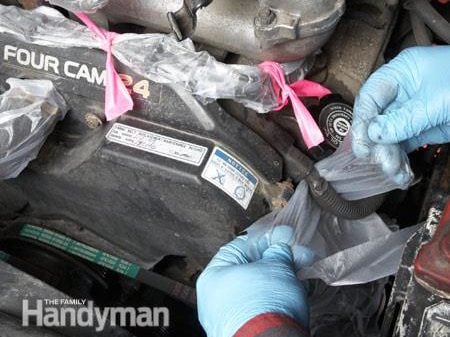
Step 1: Protect everything electrical
Degreasers work best when the grease is warm and soft. So start the engine and let it run for about five minutes. Then shut it off and let it cool down until you can safely touch the exhaust manifold. Never spray cleaners (especially flammable solvent types) on a hot engine.
If you’re using a concentrated water-based product, test it on a greasy spot. If it doesn’t cut the grease fast enough, add more concentrated degreaser to the brew.
Next, seal all the electrical connections. Wrap ignition wires and coils and all electrical connectors with plastic wrap. Then add a flag of fluorescent surveyor’s tape so you don’t forget to remove the wrap later.
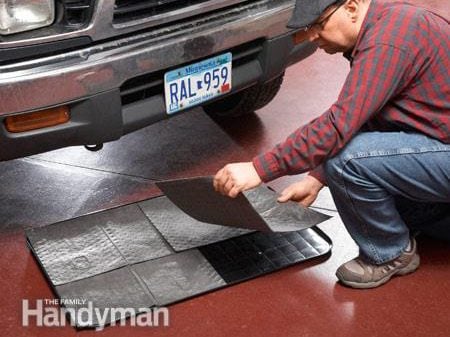
Step 2: Soak up the hazardous waste
Spread absorbent mats on a drip pan and slide the pan under the engine to soak up the runoff.
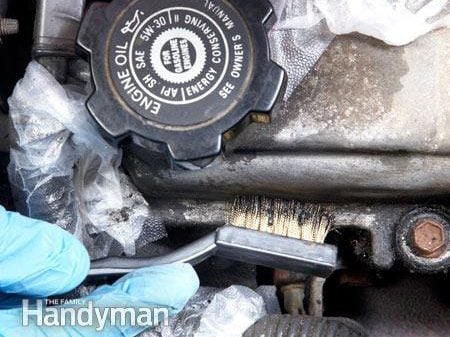
Step 3: Prep the worst areas
Break up the baked-on crud with a wire brush before you apply the degreaser. Brush gently or switch to a nylon brush around plastic components.
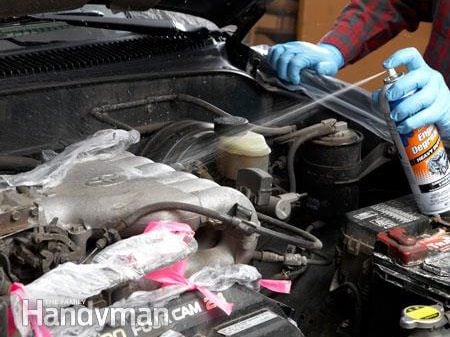
Step 4: Spray, soak and rinse
Then apply the degreaser. Spray the degreaser over the entire engine and let it soak for the recommended time. Aim carefully to prevent the overspray from reaching painted areas. Apply additional coats (if needed) to really greasy areas. Then rinse lightly with a water mist, using as little water as possible, and remove the plastic wrap. When you’re done, place the wet mats in sunlight to allow the water to evaporate. Then dispose of the mats following local regulations.
For extra protection, spray an engine protectant (GUNK Engine Shine is one brand; available at auto parts stores) onto the dry engine. The spray imparts a slight shine and a protective layer of grease to make cleanup even easier next time.
Check out more do-it-yourself car maintenance tips!
Explore Reader’s Digest Cars.